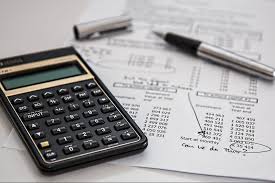When talking about finance leases in business. It allows a lessee to obtain an asset without a large upfront payment by making regular lease payments to the lessor over a specified lease term. We would be detailing what is a Finance Lease which is also known as a capital lease a type of lease agreement that allows a lessee to obtain the use of an asset while still being able to recognize the asset and related liabilities on their balance sheet.
What is Finance Lease?
A finance lease is a type of lease agreement where the lessee (the person or company leasing the asset) bears most of the risks and rewards associated with the ownership of the leased asset. In a finance lease, the lessee is typically responsible for insuring and maintaining the leased asset. As well as paying any taxes or other expenses related to the asset. At the end of the lease term, the lessee usually has the option to purchase the asset at a predetermined price, known as the residual value. This residual value is often set at a low amount to encourage the lessee to exercise the purchase option.
Finance leases are commonly used for acquiring high-value assets, such as vehicles, machinery, or equipment, where the lessee expects to benefit from using the asset over its useful life. The lessor (the owner of the asset) typically retains legal ownership of the asset throughout the lease term. It’s important to note that the specific terms and conditions of finance leases can vary depending on the agreement between the parties involved. Legal and financial advice should be sought to ensure a thorough understanding of the lease’s terms and implications before entering into such an agreement.
Here’s how finance leases typically work:
#1. Agreement
The lessee and lessor (the party who owns the asset and provides the lease) enter into a finance lease agreement. The agreement outlines the terms and conditions of the lease. It includes the lease period, monthly payments, and the purchase option at the end of the lease.
#2. Lease Payments
The lessee makes regular lease payments to the lessor over the lease term. These payments typically cover both the principal amount (the cost of the asset) and interest charges.
#3. Use of the Asset
The lessee has full use of the leased asset during the lease term. They are responsible for its maintenance and any associated costs, such as insurance and repairs.
#4. Purchase Option
At the end of the lease term, the lessee has the option to purchase the asset at a predetermined price. This is often referred to as the residual value. The residual value is a percentage of the original cost of the asset.
#5. Ownership Transfer
If the lessee decides to exercise the purchase option, they pay the residual value to the lessor. Then ownership of the asset transfers from the lessor to the lessee. The lessee becomes the outright owner of the asset.
#6. Return or Renewal
If the lessee chooses not to purchase the asset, they return it to the lessor. Alternatively, they may negotiate a renewal or extension of the lease. This allows them to continue using the asset for an additional period.
Advantages for Businesses in Finance Lease
#1. Flexibility
Finance leases provide businesses with the flexibility to acquire essential assets without a large upfront payment, preserving their working capital.
#2. Fixed Payments
Monthly lease payments are fixed, allowing for easier budgeting and financial planning.
#3. Tax Benefits
In many jurisdictions, businesses can claim tax deductions for lease payments, reducing their taxable income.
#4. Asset Updates
At the end of the lease term, businesses can upgrade to newer or more technologically advanced assets by entering into a new lease agreement.
Finance Lease Buyout
A finance lease buyout refers to the option for the lessee in a lease agreement to purchase the leased asset. That is at the end of the lease term. It allows the lessee to acquire ownership of the asset by paying the agreed-upon residual value. The residual value is a predetermined amount or percentage of the original cost of the asset.
Points about Finance Lease Buyouts
#1. Purchase Option
As part of the lease agreement, the lessee is given the choice to exercise a purchase option at the end of the lease term. This option allows the lessee to buy the asset from the lessor.
#2. Residual Value
The residual value is the price set for the asset at the end of the lease term. It is determined either as a fixed amount or as a percentage of the original cost. This value reflects the estimated worth of the asset after depreciation during the lease period.
#3. Ownership Transfer
If the lessee decides to exercise the purchase option, they must pay the residual value to the lessor. Once the payment is made, ownership of the asset is transferred from the lessor to the lessee. The lessee becomes the outright owner of the asset and assumes full responsibility for its maintenance, insurance, and other associated costs.
#4. Benefits of Buyout
A finance lease buyout allows the lessee to retain an asset that has proven to be valuable for their business operations. It eliminates the need for returning the asset or negotiating a new lease agreement.
Finance Lease Vs Operating Lease
Finance leases provide the lessee with the option to eventually own the asset,
Properties of Finance Lease
#1. Ownership
In a finance lease, the lessee has the option to purchase the leased asset at the end of the lease term.
#2. Duration
Finance leases are generally long-term leases, often covering a significant portion of the asset’s useful life.
#3. Risk and Rewards
The lessee assumes most of the risks and rewards associated with ownership, such as maintenance costs, insurance, and potential changes in the asset’s value.
#4. Accounting Treatment
Finance leases are treated as capital leases and appear as an asset and liabilities on the lessee’s balance sheet.
#5. Tax Benefits
The lessee may be able to claim tax deductions for lease payments and depreciation expenses.
Operating leases are more like rental agreements with no ownership transfer.
Properties of Operating Lease
#1. Ownership
In an operating lease, the lessor retains ownership of the leased asset throughout the lease term.
#2. Duration
Operating leases are typically short-term leases, covering a portion of the asset’s useful life.
#3. Risk and Rewards
The lessor retains the risks and rewards of ownership, including maintenance costs and changes in the asset’s value.
#4. Accounting Treatment
Operating leases are treated as operating expenses and do not appear as assets or liabilities on the lessee’s balance sheet.
#5. Flexibility
Operating leases provide flexibility as they allow businesses to easily upgrade or replace assets at the end of the lease term.
What is Financial Lease for Example?
A financial lease, also known as a capital lease, is commonly used for acquiring high-value assets such as vehicles, machinery, or equipment.
Here’s an example to illustrate how a financial lease works:
A small business needs a delivery truck for its operations, but they do not have the funds to purchase it outright. Instead, they opt for a financial lease agreement with a leasing company. The leasing company purchases the truck and becomes the lessor, while the small business becomes the lessee. They enter into a financial lease contract that specifies the lease term, monthly lease payments, and any options or conditions related to the lease.
The lessee (small business) is responsible for making regular lease payments to the lessor (leasing company) over the agreed-upon lease term. These payments include both the principal amount and interest. During the lease term, the lessee also bears responsibilities such as ensuring the truck, maintaining it, and paying any applicable taxes or fees.
At the end of the lease term, there might be an option for the lessee to purchase the truck at a predetermined price, known as the residual value. This purchase option provides the lessee with a potential opportunity to acquire ownership of the truck. Throughout the lease term, the lessor retains legal ownership of the truck, but the lessee enjoys the use and benefits of the asset as if they were the owner.
What is the Difference Between Finance Lease and An Operation Leave?
The main difference between a finance lease and an operating lease lies in the allocation of risks and benefits related to the ownership of the leased asset.
In a finance lease, the lessee assumes the majority of the risks and rewards associated with the asset’s ownership. The lessee typically has a longer lease term, has the option to purchase the asset at the end of the lease term at a predetermined price, and is responsible for insuring, maintaining, and paying any taxes or expenses related to the asset.
An operating lease is a shorter-term lease agreement where the lessor retains most of the risks and rewards associated with the asset. The lease term is typically shorter, and the lessor remains responsible for insuring, maintaining, and paying expenses related to the asset. At the end of the lease term, the lessee usually has the option to return the asset to the lessor or extend the lease.
Operating leases are often used for assets that have a shorter useful life or assets that are subject to frequent technological or market changes. They allow businesses to use the asset without the long-term commitment of ownership or the associated risks.
What are the Two Types of Finance Leases?
The two types of finance leases are capital leases and operating leases.
- Capital Lease: A capital lease is a type of finance lease that resembles a purchase of an asset. It transfers the risks and rewards of ownership to the lessee. Capital leases are treated as assets and liabilities on the lessee’s balance sheet. The capital lessee recognizes depreciation expense for the leased asset.
- Operating Lease: An operating lease is a type of finance lease that is considered more like a rental agreement. It does not meet the criteria for a capital lease, and therefore, the risks and rewards of ownership remain with the lessor. Operating leases are shorter-term and cover a portion of the asset’s useful life. They do not include options for the lessee to purchase the asset at a bargain price or transfer ownership.
What is a Finance Lease Known as?
A finance lease is also known as a capital lease or a capital lease agreement. These terms are used interchangeably to refer to the same type of lease arrangement. The terms finance lease and capital lease are more commonly used in accounting and finance contexts, while the term lease on its own can encompass various types of leasing arrangements, including both finance leases and operating leases.
What Type of Contract is a Finance Lease?
A finance lease is a type of contractual agreement between a lessor and a lessee, with the lessee having substantially all of the risks and rewards incidental to ownership of the asset.
A finance lease, also known as a capital lease, is a type of commercial lease that is treated as a purchase arrangement. In a finance lease, the finance company (the lessor) owns the asset and the lessee makes regular payments to use the asset over a fixed period. At the end of the lease term, the lessee may be able to purchase the asset at a predetermined price.
Is a Finance Lease a Loan?
A financial lease is not a loan, but a type of commercial lease where the finance company (the lessor) owns the asset and the lessee makes regular payments to use the asset over a fixed period. At the end of the lease term, the lessee may be able to purchase the asset at a predetermined price. A loan involves borrowing a specific amount of money from a lender. Which must be repaid with interest over a specific period.
Conclusion
A financial lease is a contractual agreement between a lessor and a lessee. In which the lessee obtains the use of an asset for a specific period in exchange for making regular payments to the lessor. The lessee is responsible for maintaining and insuring the asset during the lease term. At the end of the lease, the lessee may choose to purchase the asset for its residual value, and return it to the lessor. Or may enter into a new lease agreement.
Financial leases are considered both assets and liabilities on the lessee’s balance sheet, and the lease payments are recognized as both interest and principal payments. Finance leases offer flexibility, fixed payments, potential tax benefits, and the opportunity to upgrade assets. It is important for businesses to carefully evaluate the lease terms and their financial situation before entering into a finance lease. The lease term is typically long, and the lessee makes regular lease payments that include both principal and interest.
Related Articles
- EMBEDDED FINANCE: What Is It & How Does it Work?
- STRATEGIC FINANCE: Understand What Is Strategic Finance?
- PERSONAL FINANCE: Guide to Personal Finance Plan
- JOBS IN FINANCE: Highest Paid Jobs in Finance Category
- COMMERCIAL LEASE: Definition, Requirement, Process & Guide






